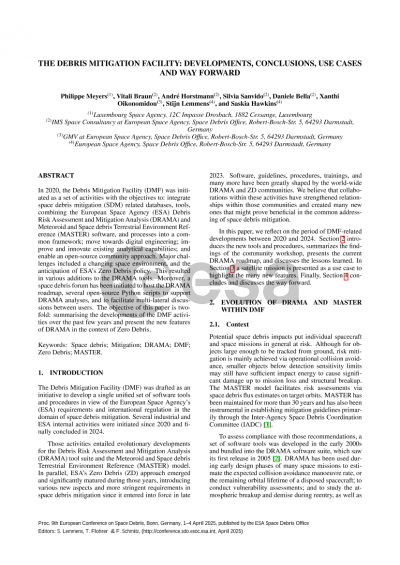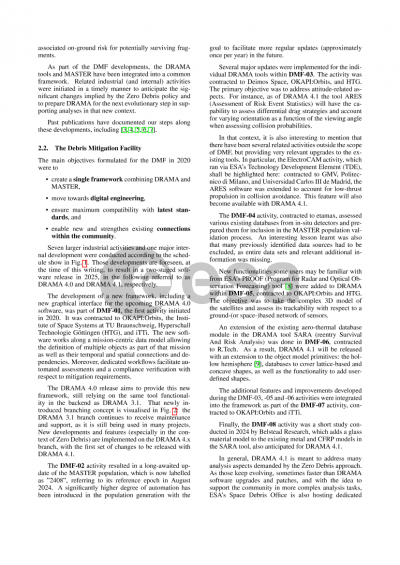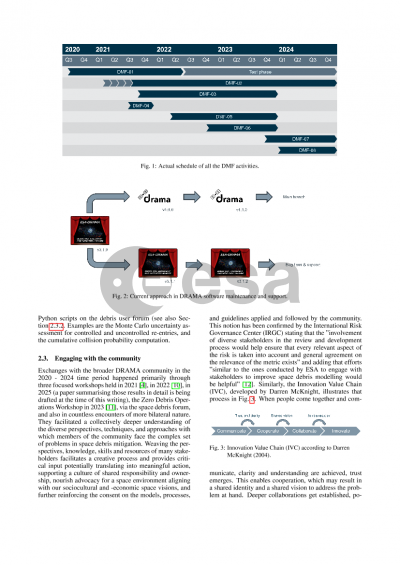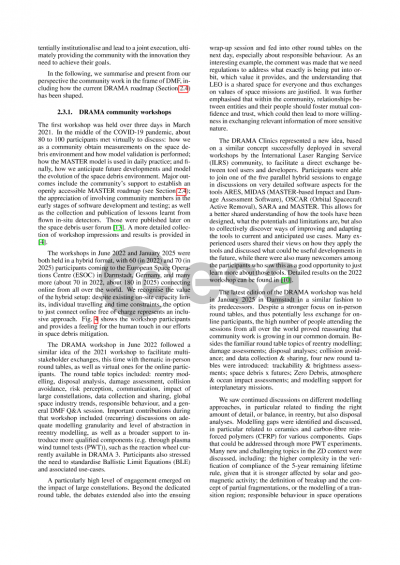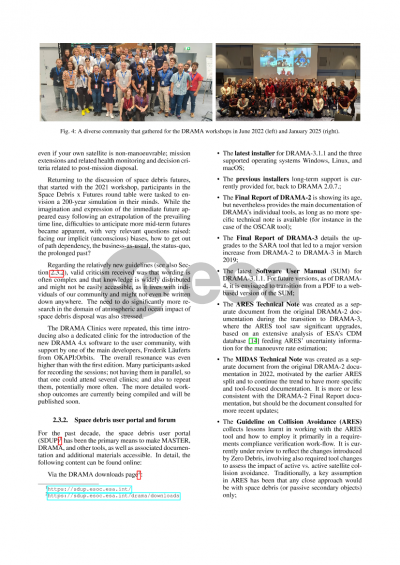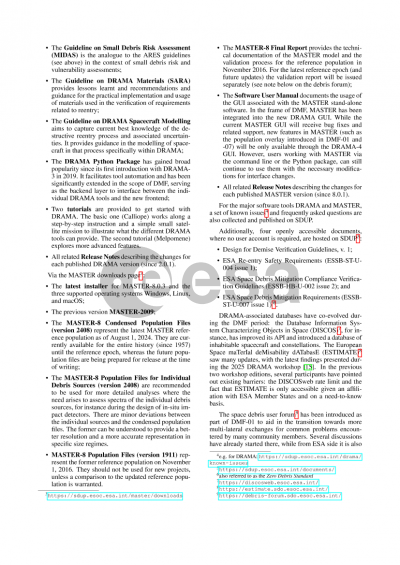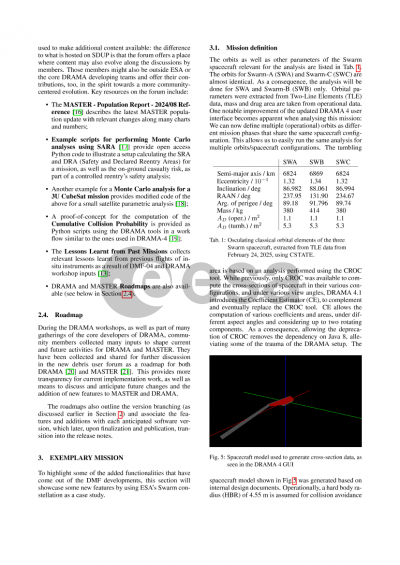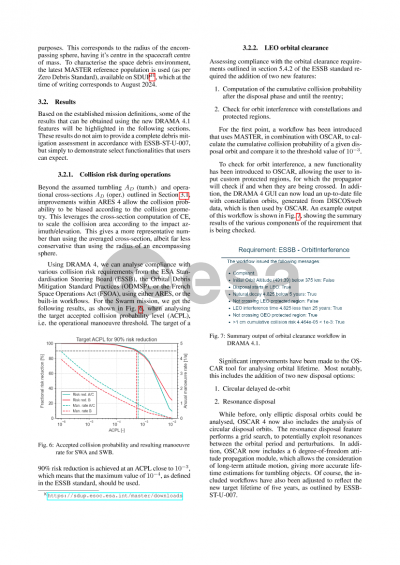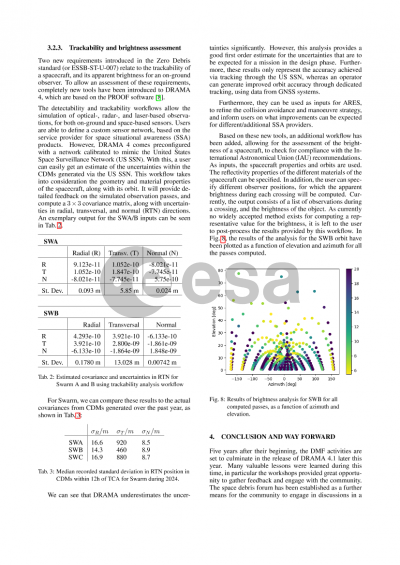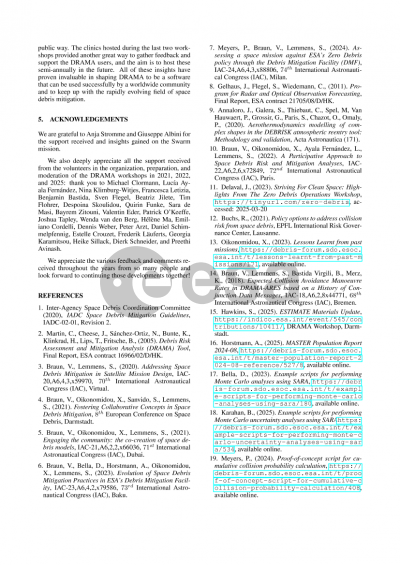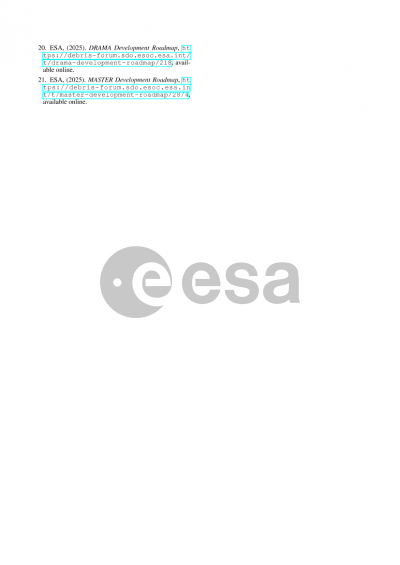Document details

Abstract
The European Space Agency (ESA), through its Space Debris Office, has been actively contributing for several decades to international efforts in co-creating, shaping and co-evolving space debris mitigation (SDM) practices. In 2014, ESA adopted the ISO 24113 standard and made SDM requirements applicable to all ESA projects. Several years later, as part of the Agenda 2025, the current ESA Director General (DG) initiated the Zero Debris (ZD) approach, including but not limited to a new standard released and made applicable in October 2023: an ambitious project recognizing that current SDM standards are insufficient to prevent the future proliferation of space debris and more stringent measures would be needed. These include prevention of debris release, control of system failure, break-up and collision risk, stricter orbital clearance, safe re-entry, and the minimisation of the impact of light and radio frequency pollution (“dark and quiet skies”).
Within that context, ESA's Debris Risk Assessment and Mitigation Analysis (DRAMA) has been co-evolving as a tool suite to support primarily mission designers in the compliance verification of their design with respect to SDM standards and requirements. In 2020, the Debris Mitigation Facility (DMF) was initiated as a set of activities with the objectives to: integrate SDM related databases, tools, and processes into a common framework; move towards digital engineering; improve and innovate existing analytical capabilities; and enable an open-source community approach.
Major challenges included a significantly changing space environment over that period, as well as an associated shift in policies by regulators world-wide and the anticipation of changes the ZD policy would introduce. This resulted in various modifications and the introduction of many new features in the DRAMA tools, for instance the computation of a cumulative collision probability, or the estimation of annual collision avoidance manoeuvre rates accounting for active satellites, too. Another objective of these developments has been an improved integration between the different tools, for a more user-friendly experience. In particular, the introduction of so-called “compliance workflows” represents a significant advancement, as they allow a comprehensive assessment at the press of a button, thereby supporting the non-expert users to in the completion of complex analyses. The Python package already well accepted within the community, received major upgrades and became an essential element of the DRAMA backend during the DMF developments. This much improved and anticipated version 4.1 of DRAMA is set to release within the first half of 2025. Moreover, a space debris forum has been initiated to host the DRAMA roadmap, several open-source Python scripts to run dedicated DRAMA analyses, as well as to facilitate multi-lateral discussions between users.
The objective of this paper is two-fold: summarising the developments of the DMF activities over the past few years, including lessons learnt, and also to present the new features of the DRAMA tool suite, in the context of ESA’s latest space debris mitigation requirements. A particular focus will be on the requirements addressing positional uncertainty and “dark and quiet skies”, which can be analysed using DRAMA’s new modules. As a suitable example, ESA’s Swarm mission will be used, to demonstrate how a compliance assessment using the DRAMA tool suite would look like, while also allowing for comparisons to historical data gathered during operations.
Preview
